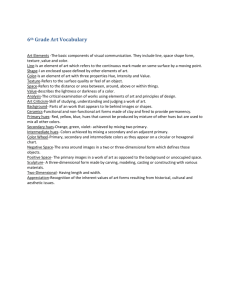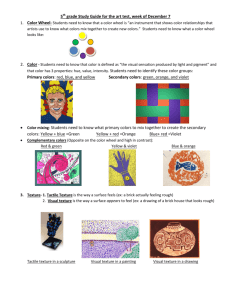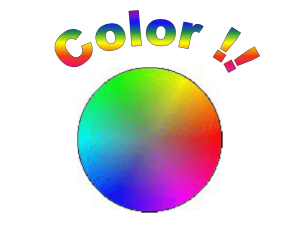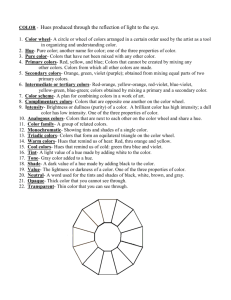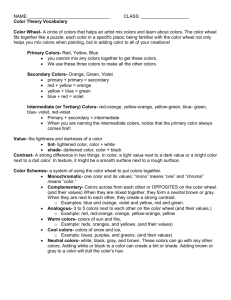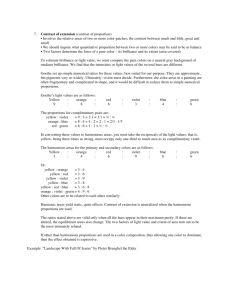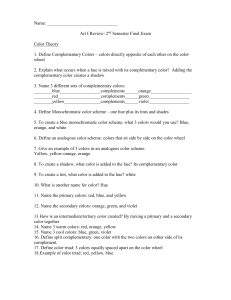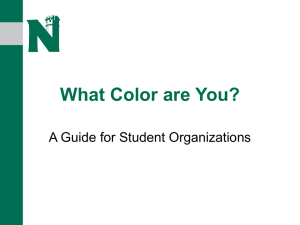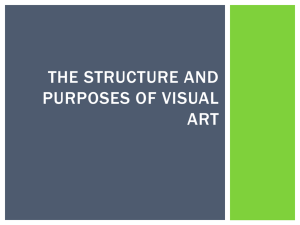Color Properties of color Most Expressive element of art Is powerful
advertisement
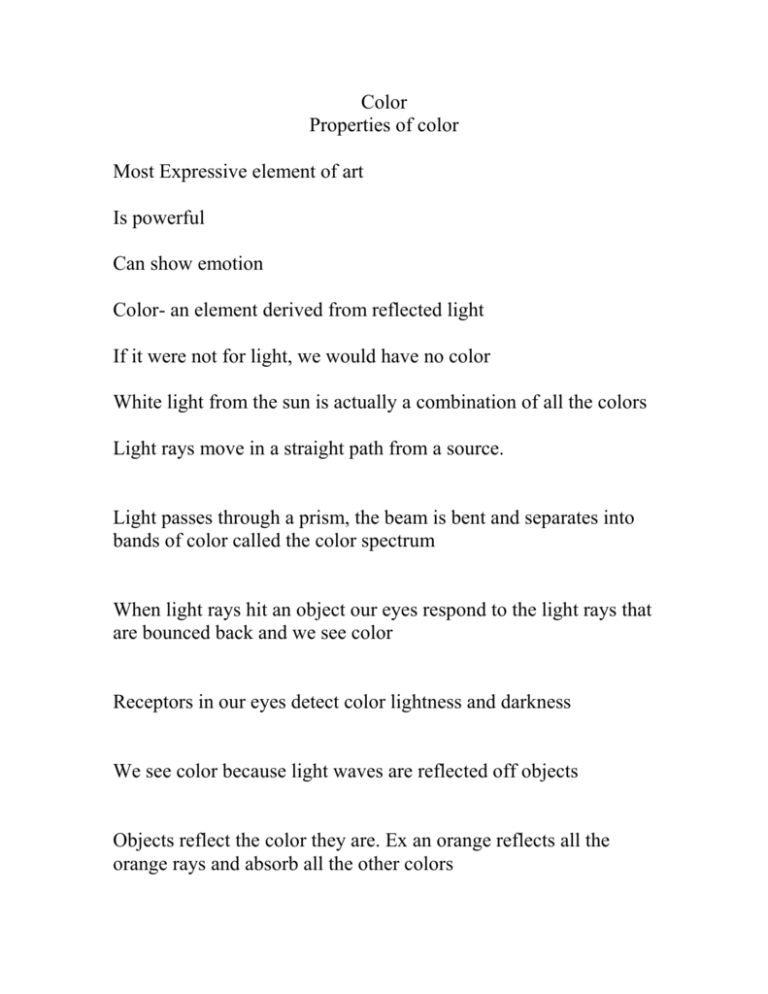
Color Properties of color Most Expressive element of art Is powerful Can show emotion Color- an element derived from reflected light If it were not for light, we would have no color White light from the sun is actually a combination of all the colors Light rays move in a straight path from a source. Light passes through a prism, the beam is bent and separates into bands of color called the color spectrum When light rays hit an object our eyes respond to the light rays that are bounced back and we see color Receptors in our eyes detect color lightness and darkness We see color because light waves are reflected off objects Objects reflect the color they are. Ex an orange reflects all the orange rays and absorb all the other colors When light is separated, it is always arranged in the same order. Red, orange, yellow, green, blue and violet The rainbow is a natural example of the color spectrum After images are opposites. After images are weaker Three properties of color are-Hue, value and intensity Hue- the name of a color in the spectrum Value- the lightness or darkness of a color Intensity- the brightness or dullness of a hue As artist we use pigments in the form of powder or liquid paints to create color Sir Isaac Newton’s experiments with light helped him invent the first color wheel. The color wheel is the spectrum bent into a circle. It is a useful tool for organizing color In 1666, Newton passed a beam of sunlight through a prism which produced red, blue, yellow, green, and cyan beams of the visible spectrum. One hundred years later, Johann Wolfgang von Goeth,(1749-1832) ( German writer and scientist studied how colors made us feel blue evoked quiet moods- red evoked cheerfulness He divided the colors into two side green to violet to blue, plus side red to orange to yellow By the mid 1900’s Johannes Itten a German theorist who worked in art and design school developed the color wheel as it is known today. He borrowed from Goeth and considered the emotional value of color Blue is associated with cool and red with warmth. Categories of Color or Color Theory Primary Colors- Red, yellow, blue –These colors can not be mixed, they must be bought in some form Secondary colors- Orange Violet Green These colors are created by mixing two primaries Intermediate Colors- Red-orange, yellow green, blue violet etc. are made by mixing a primary with a secondary creates these colors. (Also called Tertiary colors) Complementary colors- are colors that are opposite each other on the color wheel. When placed next to each other they look bright and when mixed together they neutralize each other. Color Harmonies Color Harmonies are when an artist uses certain combinations of colors that create different looks or feelings Analogous colors- are colors that are next to each other on the color wheel for example red, red orange and orange are analogous Triadic Harmony is where three equally spaced colors on the color wheel are used for example yellow Red, Blue is triadic harmony Monochromatic is where one color is used but in different value and intensity Warm colors are on one side of the color wheel and they give the feeling of warmth for example red, orange and yellow, they are the color of fire and feel warm Cool Colors- are on the other side of the color wheel and they give the feeling of coolness for example blue violet are the color of water and green the color of cool grass Color Value Value is the element of art that describes the darkness or lightness of a color Not all hues have the same value Yellow is the lightness because it reflects the most light Violet is the darkest because it reflects the least Black White and grey are neutrals White reflects all the color waves and does not absorb any Black object absorbs all the color waves and reflects none of the waves Black is the absence of light Grey is impure white It reflects equal parts of each color wave You can change the value of any hue by adding white to make a tint and black to make a shade Intensity is the brightness or darkness of a color To change the intensity of a color or hue, add the hues complement Adding a hues complement dulls the hue or lowers its intensity.

